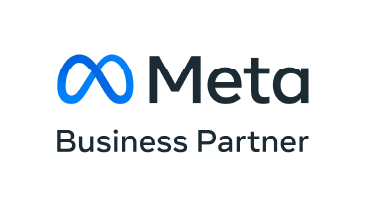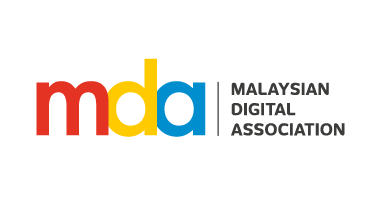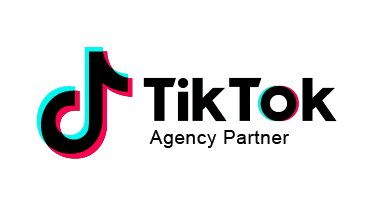The Best of White Hat & Black Hat SEO: Grey Hat SEO
If you’ve ever searched for information on SEO, you’ve probably come across the terms “White Hat” and “Black Hat.” But what do these terms mean?
In the world of SEO, White Hat techniques are those that abide by Google’s guidelines, and Black Hat techniques are those that violate them. Grey Hat techniques are somewhere in between – not exactly White hat, but not exactly Black hat either.
So what differentiates these three categories?
Table of Contents
White Hat SEO: FOLLOW THE ‘RULES’
Employing White Hat techniques is the most secure and recommended approach to optimise your website. These strategies abide by Google’s search engine guidelines and are aimed at enhancing the user experience of your website. In essence, White Hat SEO involves improving your website’s ranking and visibility by generating valuable content for your audience, optimising on-page SEO, and establishing connections within the online community.
Common White Hat SEO Techniques
White hat SEO includes creating keyword-rich content, optimising titles and meta descriptions, building high-quality backlinks, good internal linking, and improving site speed. These SEO techniques may take longer to see results, but they will ultimately help you build a sustainable and successful online business.
Pros & Cons of White Hat SEO Method
The main advantage of White Hat SEO is that it helps you build a long-term, sustainable business. By following Google’s guidelines, you can avoid penalties or bans that could hurt your business in the long run.
The downside of White Hat SEO is that it can take longer to see results. White Hat SEO may not be your best option if you’re looking for quick results.
Black Hat SEO
Black Hat techniques, on the other hand, are those that focus on gaming the system. These techniques are designed to get a website to rank highly and faster in search engine results pages (SERPs), regardless of whether or not the content is relevant or useful.
Common Black Hat SEO Techniques
Engaging in Black Hat SEO practices includes stuffing your content with excessive keywords, duplicating your content, creating doorway pages and spammy links, or hiding text on your website. These tactics not only violate search engines’ guidelines but also pose a risk of incurring manual penalties.
Pros & Cons of the Black Hat SEO Method
The advantage of Black Hat SEO is that it can help you achieve quick results. If you’re looking to rank highly in SERPs in a short amount of time, Black Hat techniques may be helpful.
Nevertheless, the downside is that these techniques are not sustainable in the long run. Don’t forget that Google constantly updates its algorithm to improve the search experience for users. You could be penalised by Google or, worse, lose the trust of your audience. If a business is no longer discoverable through its primary organic source, it could potentially lose its most significant revenue stream.
The main difference between white-hat SEO and black-hat SEO is intent. White hat SEO takes substantial time to climb up the search engine rankings, while black hat SEO can help your website rank faster but violates search engine guidelines.
Is there a middle ground that we can work with?
That’s where grey hat SEO comes in – it’s the best of both worlds!
Grey Hat SEO: THE MIDDLE GROUND
Grey Hat techniques are somewhere in between White Hat and Black Hat. They may not always be recommended, but they’re not necessarily penalised by Google. Implementing Grey Hat SEO can be risky, but it can help you achieve your desired results if used correctly.
Common Grey Hat SEO Techniques
Some common Grey Hat techniques include buying expired domains, article spinning, using private blog networks (PBNs), and linking your site to multiple social media accounts. While these techniques may help you achieve short-term success, they could also put your website at risk in the long run.
Purchasing Links
One common Grey Hat SEO technique is purchasing links. This means paying someone for a link to your website. This approach looks more natural, and it is improbable for Google to penalise your website.
However, the link purchased should be from a relevant website with a good domain rating to be considered a quality link. Find out more about getting backlinks in Malaysia here.
Product Reviews
Another Grey Hat technique is product reviews. This means writing a review for a product or service you haven’t used. These reviews can help boost your website’s ranking but can also mislead your audience.
Native Advertising & Partnerships
Native advertising is also a common Grey Hat technique. This involves partnering with a company to create content that looks like an advertisement but is designed to be helpful and informative. For example, a blog post sponsored by a company that doesn’t explicitly promote its product would be considered native advertising.
Paying for Citations and Listings
Paid citations and listings are considered common Grey Hat techniques. This involves paying to have your website listed in directories or other online resources. While this may help you achieve a higher ranking in SERPs, it could also be considered manipulative by Google.
Affiliate Marketing
Affiliate marketing involves promoting products or services in exchange for a commission. While this approach can be effective, ensuring you only promote products or services relevant to your audience is essential.
Pros & Cons of Grey Hat SEO Method
The advantage of Grey Hat SEO is that it can help you achieve quick results. These techniques are designed to get a website to rank highly on search engine results pages (SERPs).
The downside is that these techniques are only sometimes sustainable in the long run.

Gain more traffic and boost your website rankings with grey hat SEO strategies
Source: Freepik
GOOGLE GUIDELINES
While it is not illegal to ignore Google’s guidelines, using particularly malicious SEO tactics, such as hacking, could result in legal consequences if detected. Furthermore, there is no official authority that defines ethical SEO practices. Rather, SEO professionals rely on search engine guidelines to establish a widely agreed-upon standard that resembles a regulatory body.
Google holds the power to determine which websites are included in SERPs. To prevent the manipulation of search results through unethical means, Google has developed complex algorithms that identify acceptable and unacceptable SEO practices, thus establishing a standard for fair play in optimization. These algorithms are designed to detect websites that violate ranking system principles and distinguish them from those that do not.
SEO professionals often refer to Google’s webmaster guidelines as a clear set of rules to avoid any risky tactics that could lead to negative consequences if uncovered. Google places a special emphasis on its Quality Rater Guidelines (QRG), which identify the most common forms of manipulative or deceitful behaviour. The guidelines are directly related to the modifications Google has made to its algorithms throughout the years. Penguin, Panda, and Payday are just a few examples of Google algorithm updates that aimed to reduce the number of non-compliant websites in the SERPs.
To rank highly in the SERPs, SEO professionals will need to consider the E-E-A-T (experience, expertise, authority, and trustworthiness) factors, especially for websites categorised as YMYL (Your Money, Your Life). To learn more, check out our article on ‘What is YMYL, and why does it matter?’.
So which SEO techniques should you use for your business?
It depends.
Focusing on White Hat SEO is best if you’re just starting out. This will help you create and build a strong foundation for your business that will last for years. However, in an industry with high competition, it may be difficult for your brand to achieve a high ranking against competitors who are utilising unethical SEO practices, i.e. Black Hat techniques.
On the other hand, if your objective is to achieve immediate results but cannot afford the high risk of getting penalised by Google, you may want to consider using some Grey Hat techniques. Just consider the risks and rewards before implementing anything on your website.
If you are working on a website that belongs to someone else and they are not aware of the potential risks involved, it is never acceptable to subject the site to such risks.
Regardless, the Primal tribe is here to help!
Our SEO specialist team will develop a thoughtfully planned SEO strategy abiding by search engines’ rules and regulations while ensuring they effectively accomplish its objectives. Contact us today.









Join the discussion - 0 Comment